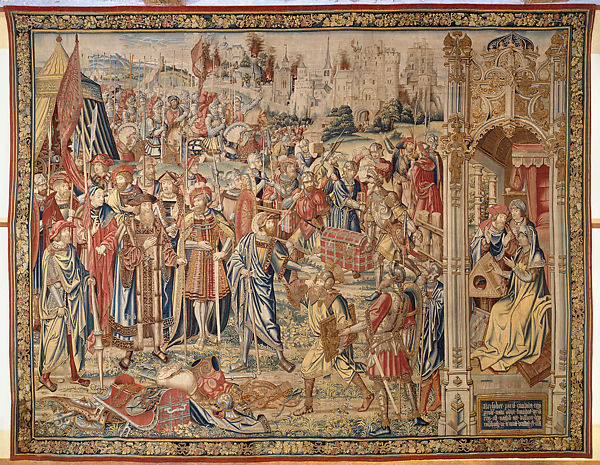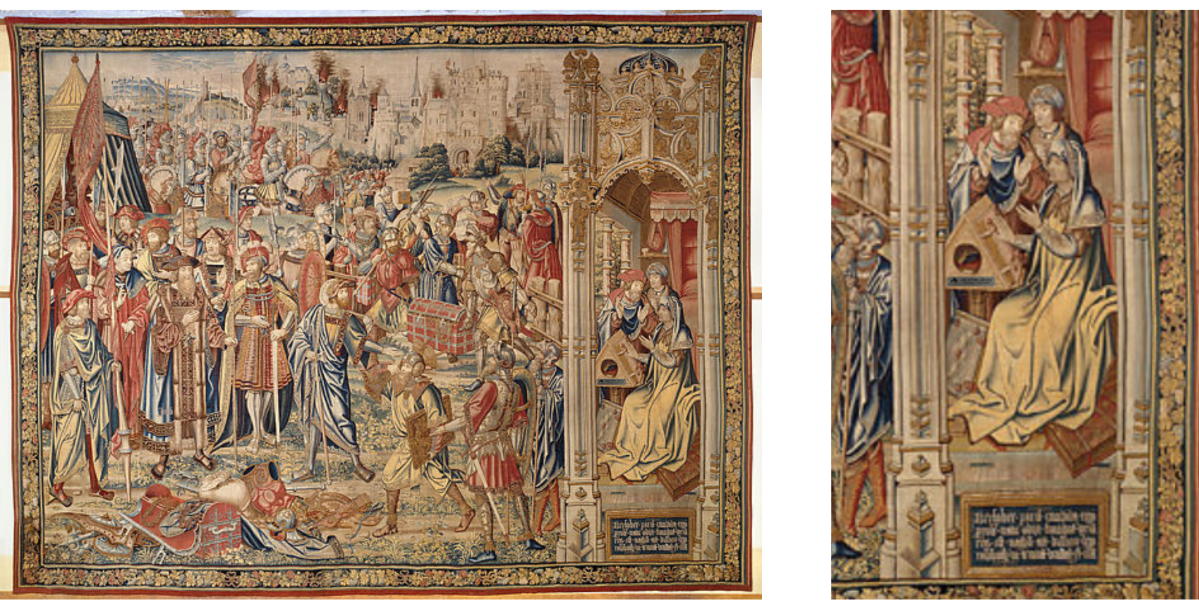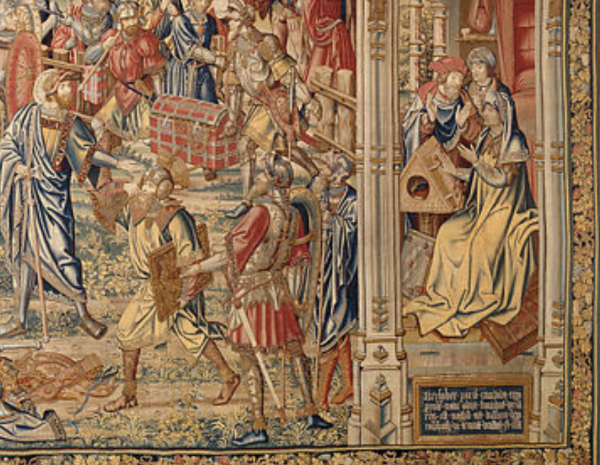The Metropolitan Museum of Art, or “The Met,” is the largest museum in the Americas. Its permanent collection contains over two million works. In one of those two million works, we’ve discovered what could possibly be argued as the first Little Free Library book-sharing box.
The European Sculpture and Decorative Arts collection at The Met features a tapestry, The Division of the Booty, from a ten-piece set of the Story of David and Bathsheba. In the bottom right corner, you can see a small triangular structure with a circular opening, which contains a few books.

In an analysis of the tapestry series from 1974, there is no clear explanation of what the book box is. The description of the tapestry, which is the final piece of the series, simply notes: “To the right we again see a domestic interior. The author of the book, or the reader of it, closes the cover.” We think it’s fair to assume that this, indeed, is the reader’s own Little Free Library book-sharing box.
Of course upon further research, there is a historical purpose (and actual name) for the structure. We believe that it actually is a lectern. “A lectern (from the Latin lectus, papst participle of legere, “to read”) is a reading desk with a slanted top, placed on a stand, on which books or documents are placed as support for reading aloud, as in a scripture reading, lecture, or sermon.” In some cases, the lectern has an opening on the side with room for storage. As shown in The Division of the Booty, books were sometimes stored inside, which makes it a literal book-sharing box. A Little Lectern Library if you will.
Can you believe it? A Little Free Library in the Middle Ages!

Book sharing is, of course, a long-practiced tradition, and it’s not surprising that there was a Little Free Library of sorts long before the first official Little Free Library that Todd Bol built. It’s thrilling to see a book exchange modeled in a piece from the 16th century, showing that reading and book access has been important for hundreds of years.
Learn how you can start a Little Free Library book exchange of your own!

